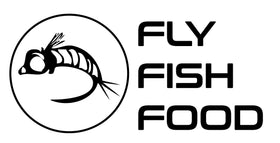Hackle Colors to Rule Them All
Cheech - November, 2013

13years ago, I sat mumbling in Spanish at a call center wishing I could be out throwing banjo minnows at my beloved bass when a colleague of mine started unboxing a fly tying kit from his backpack. "If we have to sit here tied to our phones all day, I might as well be productive," he said. One thing led to another, and I ended up tying my first fly that day. I remember it well. It was a red, blue, and yellow wooly bugger. That turned into almost an every day thing, and it was a great way to pass the time while we waited for our phone calls (I HATE call centers). That is how I got introduced to the art of tying flies.
The thing I remember most about those days tying in the call center was the fact that we never had the right hackle for the job, and we would end up cutting the webby, schlappen-like hackle to get it to fit. Now... these were some of the rattiest flies I can remember, but the fact was; we tied them, and they were cool to us. After burning through all of my co-worker's materials, I told him that I would make a trip to the fly shop to replenish the goods, and I was specifically on a mission to find good dry fly hackle that would turn our ratty dry flies into masterpieces. I was wrong. I was wrong, not because of the quality of the flies that we would be able to produce, but because of the price of the hackle. I remember thinking "$60 for a chicken pelt???!!!" There had to be a better way... Well, there isn't. I was also wrong because I was completely overwhelmed with the huge selection of colors that were available. After a near panic attack, I ended up buying a dun colored Metz #2 cape that did the trick for a little while. If I knew what I know now, I would have gone about it a whole different way.
In this post, I don't want to talk about the price of hackle or the brands that you should look for, but the colors of hackle that a new (or experienced) tyer can focus their tying around. In my opinion, there really isn't a need to have every color of hackle known to man, even though I'm a full fledged Hackle-O-Holic and I have more "chicken feathers" than I'll ever use in a lifetime.
3 Colors to Rule Them All

1. Grizzly
Grizzly hackle is among the most fishy materials that you could ever think of binding to a hook. It's mottled coloration can be used on almost any hatching mayfly imitation, and can be substituted for almost any other color of hackle on any pattern. Yes, it will make the fly look a bit different, but the fish don't seem to mind. I have grizzly hackle in capes, saddles, large, small, midge, etc., you get the point? This should be the first color that a new tyer gets.

2. Dun
Dun, or some variation of it makes a great color to imitate most mayfly wings and legs. My favorite color is Whiting's medium dun, and I tie everything from green drakes to PMDs with it. It's also a very versatile color that easily blends with a variety of other colors. I have good cream colored hackle, but it sits on the bench because I typically sub it out for a light dun color.

3. Brown
Brown has a great dark contrast without being too dark (black), and my favorite shade to work with is a nice deep coachman brown. I don't really tie with it for hatch matching bugs (maybe except for large stoneflies), but it's a go-to for attractors. It's also a staple for tying the Parachute Adams, which just happens to be the most effective fly on the planet. Part of the Parachute Adams' effectiveness comes from blending both brown and grizzly hackles, which I also highly recommend trying with other patterns.
I remember tying my first batch of Parachute Adams with grizzly hackle because I didn't have brown yet. I was confident that they weren't going to work because I wasn't following the "rules," but guess what? I must have found some really dumb trout because they worked. Later that summer, I was tying drake patterns that called for grizzly barred olive hackle. Guess what... Grizzly worked again.
With these three colors of hackle, you should be able to cover a broad spectrum of patterns while saving a little bit of cash in your pocketbook.
~ Cheech




